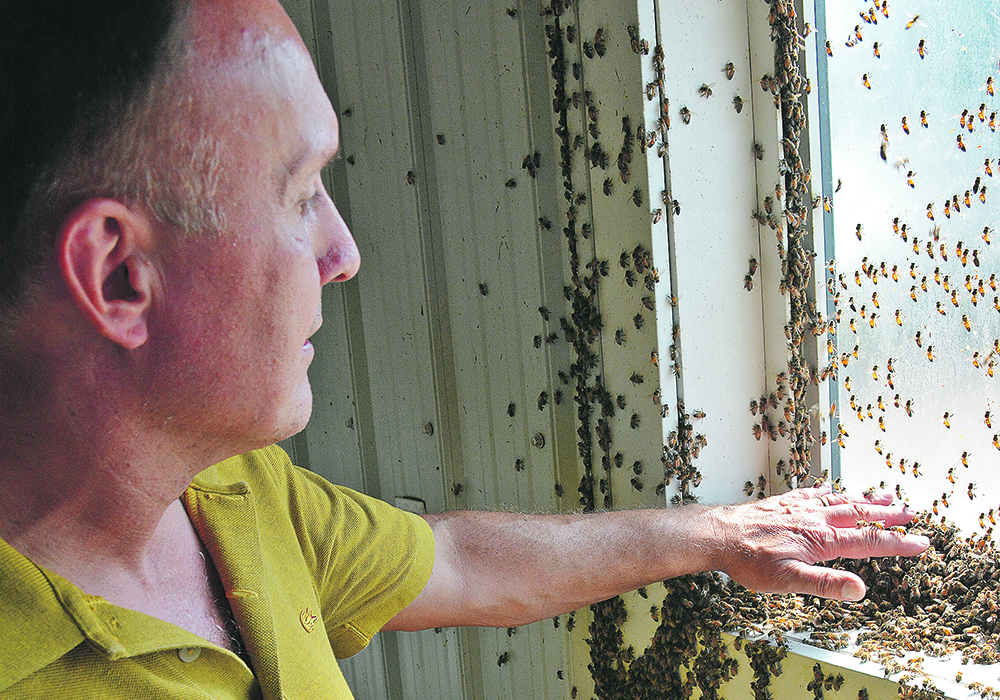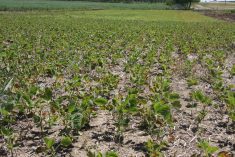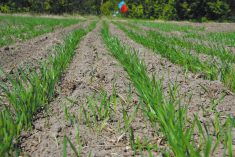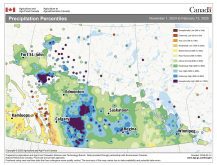Production is expected to take a big hit as heat slows bee activity and drought decimates the crops on which they feed
Many Alberta beekeepers slammed by drought, heat and wildfire smoke this summer are expecting significant declines in production, affecting the largest segment of Canada’s honey industry.
Due to what are now three consecutive seasons of lower-than-average production in Alberta and much of Western Canada, there is no honey in reserve and supplies are tight, said director Lorne Prins of the Alberta Beekeepers Commission.
“My concern as a local producer is that if the shortage of honey drives up the price of our local product, then the market will have a tendency to replace local honey with foreign honey, and that’s not something we want to see.”
Read Also

China’s grain imports have slumped big-time
China purchased just over 20 million tonnes of wheat, corn, barley and sorghum last year, that is well below the 60 million tonnes purchased in 2021-22.
Alberta contains more than 40 percent of Canada’s honey industry, producing about 18.6 million kilograms of honey in a good year, said Connie Phillips, executive director of ABC. The province’s production was valued by Statistics Canada at about $64 million in 2018 in terms of gross economic benefits, along with a further $3 million in pollen and beeswax sales.
“I think there was a 30 percent reduction in honey production (in 2020) because of the bad weather last year, but it was kind of the opposite — cold and wet … versus too hot,” said Phillips.
Although losses this year could potentially be at least as much, it’s too early to say how far overall production will decline, she added.
As the owner of the Gull Lake Honey Co. near Lacombe, Alta., Prins said initial optimism due to what he called reasonable overwintering of bees has faded.
“We’re not finished harvest yet, but I would say that a lot of beekeepers are reporting significantly lower honey yields than expected,” he said.
“And I’ve heard the number ‘50 percent’ being thrown around, so where we are (for my operation), I think we’re a little bit better than 50 percent of what we hoped for … but I’m not going to get there. I’m not going to hit my goals this year.”
Environment Canada said a heat dome set new maximum daily temperature records in the mid- to high-30s C in 45 communities across Alberta on June 30, surpassing 40 C in a further four. Temperatures in the 30s C continued for much of July into August in the province.
Prins said such conditions likely did not kill bees “to a significant extent, but during that extreme heat, the bees did very little because they cannot work in that temperature.” The ongoing heat and lack of rainfall also created drought in several parts of Alberta, decimating crops such as canola that have failed to produce pollen, said Phillips.
Other locations are seeing crops that are maturing more quickly than normal, she said. “All the crops are coming in early — that’s one thing. It’s so dry, it doesn’t look like there’s going to be, for example, any more alfalfa this year, which is a key forage crop for the bees near the end of the season.”
A persistent haze of forest fire smoke has been “like getting kicked while you’re down,” said Prins. “We pacify bees by smoking them… and if you have smoke in the air, your honey production will take a serious hit because activity just is reduced.”
He likened the triple whammy of drought, heat and smoke to three strikes, you’re out. “There’s no flowers to collect nectar, there’s no plants producing pollen, and when the dearth happens, the colony is completely dependent on whatever resources they have stored through the prime foraging period of time.”
Bees are requiring help earlier than normal from beekeepers to prepare them for the winter, said chief executive officer Mark Redmond of the provincial Results Driven Agriculture Research (RDAR) fund.
“It’s been a challenge for the bees to find enough food at this time of the year, and there’s not enough moisture, so the bees are hungry and thirsty, and so the beekeepers have been finding themselves in the unusual situation they have to start winterizing therapies now.”
For Scandia Honey south of Brooks, Alta., bees traditionally get fed in mid-September, but the conditions are such there is a good chance that will come earlier, said co-owner Echo Chandler.
With some uncertainty on import access to replacement bees from New Zealand still hanging over the planning for next year, being able to overwinter as many bees as possible this year will be doubly important, she said.
Prins said late June to early August is a key mating time for local queen bees in Alberta. “And there are some concerns that mating activities were impacted. The sperm viability from the male bees could be impacted, and we won’t know how bad that is until this winter and next spring….”
Scandia Honey, one of the largest beekeepers in the province, is focused on the crop pollinating side of the bee business. Chandler said her outfit was able to get that done early this year.
“We made that happen and bees were strong, so I think it’ll affect more of the honey crop.”
That’s where Chandler believes the Alberta government’s AgriRecovery program will come into play because bees will be short on honey for feed this year, similar to the situation for cattle and hay.
“Usually there is some honey in their hive — we take some, but we leave them some — but if there is nothing else out there, then they need to be fed earlier.”
Although heat reduced flowering in many crops for Scandia Honey, Chandler said “so far, we’re having an OK honey year.”
That could change, however.
“I think all beekeepers in Alberta with this drought and everything, we don’t know what’s coming in. We have no idea.”
For more content related to drought management visit The Dry Times, where you can find a collection of stories from our family of publications as well as links to external resources to support your decisions through these difficult times.

















